วัดปทุมวนาราม
วัดปทุมวนาราม
ที่อยู่ 969 พระราม1 แขวงปทุมวัน กทม 10330
ผู้ครอบครอง วัดปทุมวนารามราชวรวิหาร
สถาปนิกผู้ออกแบบบูรณปฏิสังขรณ์ จุฬาลงกรณ์มหาวิทยาลัย( ศาลาคู่หน้าพระอุโบสถ, ศาลาเฉลิมพระเกียรติ ) , บ.บูรณาไท ( พระอุโบสถ, พระวิหาร ), กรมศิลปากร ( พระเจดีย์ประธาน, งานปรับปรุงภูมิสถาปัตยกรรม )
ปีที่สร้าง พ.ศ. 2400 ฉลองพระอาราม พ.ศ. 2410
ปีที่ได้รับรางวัล พ.ศ. 2556
ประวัติ
เมื่อพระบาทสมเด็จพระจอมเกล้าเจ้าอยู่หัว มีพระราชดำริจะสถาปนาพื้นที่ท้องนาหลวงในคลองบางกะปิ เพื่อให้เป็นรมณียสถาน โดยมีการขุดสระบัวให้เป็นเกาะแก่งใหญ่น้อย และสร้างพระราชวังและหมู่อาคารต่างๆ เป็นที่ประทับ ในส่วนที่ดินข้างใต้ทรงโปรดฯให้สร้างพระอาราม โดยมีสมเด็จเจ้าพระยาบรมมหาพิไชยญาติ ( ทัต )เป็นแม่กอง และพระยาสามภพพ่าย ( หนู )เป็นนายงานควบคุมการก่อสร้าง พระราชทานนามพระอารามว่า วัดปทุมวนาราม ได้อัญเชิญพระบรมสารีริกธาตุ มาบรรจุไว้ที่พระเจดีย์ประธาน ที่ท้ายพระวิหารปลูกต้นพระศรีมหาโพธิ์ พร้อมก่อสร้างวิหารล้อม พระบาทสมเด็จพระจอมเกล้าฯ เสด็จพระราชดำเนินมาทรงก่อพระฤกษ์พระอุโบสถ เมื่อ 11 มิ.ย. 2400 ได้อาราธนาพระราชาคณะและพระสงฆ์จากวัดบวรนิเวศ มาครอง กระทั่ง พ.ศ. 2410 จึงทรงพระกรุณาโปรดเกล้าฯให้จัดงานสมโภชวัดปทุมวนารามอย่างยิ่งใหญ่
พระอารามล้อมรอบด้วยคูและสระน้ำ ผังพระอารามเป็นรูปสี่เหลี่ยมผืนผ้า หันหน้าไปทางทิศตะวันออก ในเขตกำแพงพุทธาวาสประกอบด้วยอาคาร พระอุโบสถขนาดเล็ก พร้อมศาลาคู่ หน้ากำแพง พระเจดีย์ประธาน ถัดมาเป็นพระวิหารขนาดใหญ่กว่าพระอุโบสถ ด้านท้ายมีวิหารโพธิ์ มีศาลาราย และหอกลอง หอระฆัง รายไปตามแนวกำแพง และซุ้มประตูเข้าออกอีก 6 ซุ้มเขตพุทธาวาสอยู่ท้ายกำแพงเขตพุทธาวาส เดิมเป็นอาคารเครื่องไม้ แต่ได้รับการบูรณะสมัยรัชกาลที่ 5 พระอุโบสถและพระวิหารเป็นอาคารทรงโรงก่ออิฐถือปูน พระวิหารมีเสาร่วมใน โครงหลังคาไม้รับกระเบื้องรางจีน ประดับด้วยรวยระกา ช่อฟ้า หางหงส์ แบบประเพณีปิดทองประดับกระจก หน้าบันพระอุโบสถเป็นไม้แกะ ประดับกลางด้วยรูปมงกุฎแบบมีกระบังหน้าเหนือพานแว่นฟ้าในวงกรอบลายทรงพุ่มข้าวบิณฑ์ รายล้อมด้วยกอบัว ส่วนพระวิหารมุขหน้า ที่หน้าบันปั้นปูนรูปพระมหาพิชัยมงกุฎบนพานแว่นฟ้าขนาบด้วยฉัตร ซุ้มประตูหน้าต่างปั้นปูนปิดทองประดับกระจก ทั้งนี้ทุกอาคารมีลายประดับ ปูนปั้นต่างๆ ล้วนออกแบบโดยใช้ดอกบัวเป็นองค์ประกอบในการสร้างสรรค์ นับเป็นความพิเศษของศิลปกรรม ณ พระอารามแห่งนี้
อาคารเสนาสนะหลายหลังได้รับการดูแลบูรณปฏิสังขรณ์เรื่อยมา หากแต่มิได้กระทำอย่างสมบูรณ์ครบถ้วน ตราบจนเนื่องในวโรกาสที่ พระบาทสมเด็จพระเจ้าอยู่หัวทรงเจริญพระชนมพรรษา 80 พรรษา และวัดปทุมวนารามครบรอบ 150 ปี แห่งการสถาปนา ใน พ.ศ. 2550 ประกอบกับในปี พ.ศ. 2554 เป็นปีที่พระบาทสมเด็จพระเจ้าอยู่หัวทรงเจริญพระชนมพรรษา 7 รอบ 84พรรษา วัดปทุมวนาราม จึงมีดำริที่จะดำเนินโครงการพัฒนาพระอาราม เพื่อเฉลิมพระเกียรติในวโรกาสสำคัญต่างๆพร้อมทั้งได้รับการสนับสนุนร่วมมือกับภาคราชการ อาทิ จุฬาลงกรณ์มหาวิทยาลัย, กรมศิลปากร, สำนักงานทรัพย์สินส่วนพระมหากษัตริย์ ภาคเอกชน อาทิ กลุ่มเซ็นทรัล, เอ็มเคสุกี้ ตลอดจนพุทธศาสนิกชนทุกหมู่เหล่า จนการดำเนินการบูรณปฏิสังขรณ์อาคารในพื้นที่เขตพุทธาวาสรวมถึงงานภูมิสถาปัตยกรรมแล้วเสร็จสมบูรณ์ สมเด็จพระเทพรัตนราชสุดาฯ สยามบรมราชกุมารี เสด็จพระราชดำเนินทรงยกฉัตรพระประธาน และทรงยกช่อฟ้าพระอุโบสถและพระวิหารที่บูรณะแล้วเสร็จ เมื่อ 13 ตุลาคม 2554
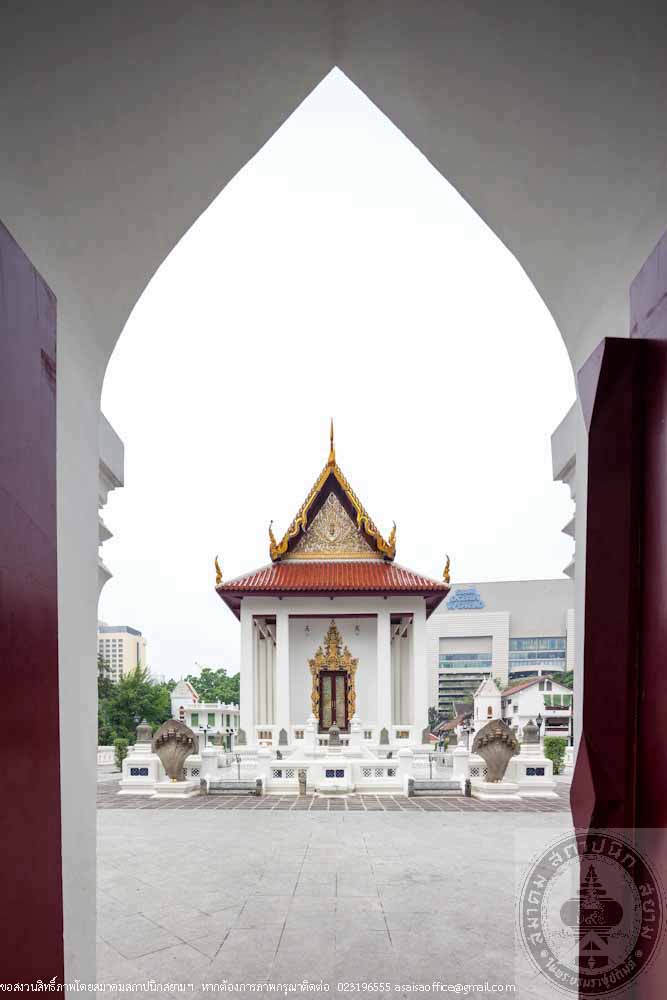
วัดปทุมวนาราม

วัดปทุมวนาราม

วัดปทุมวนาราม
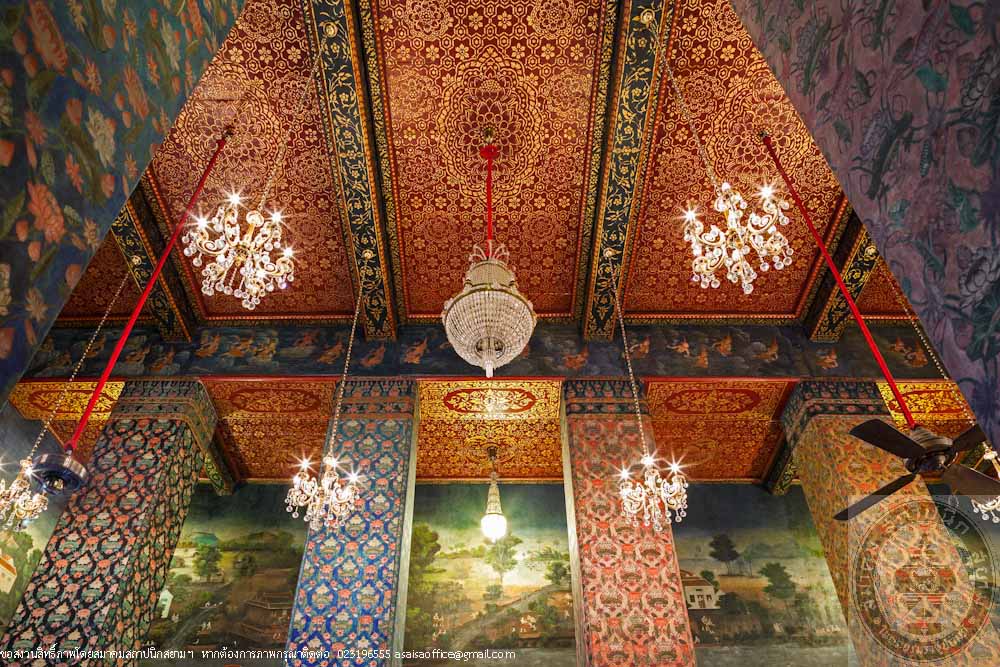
วัดปทุมวนาราม
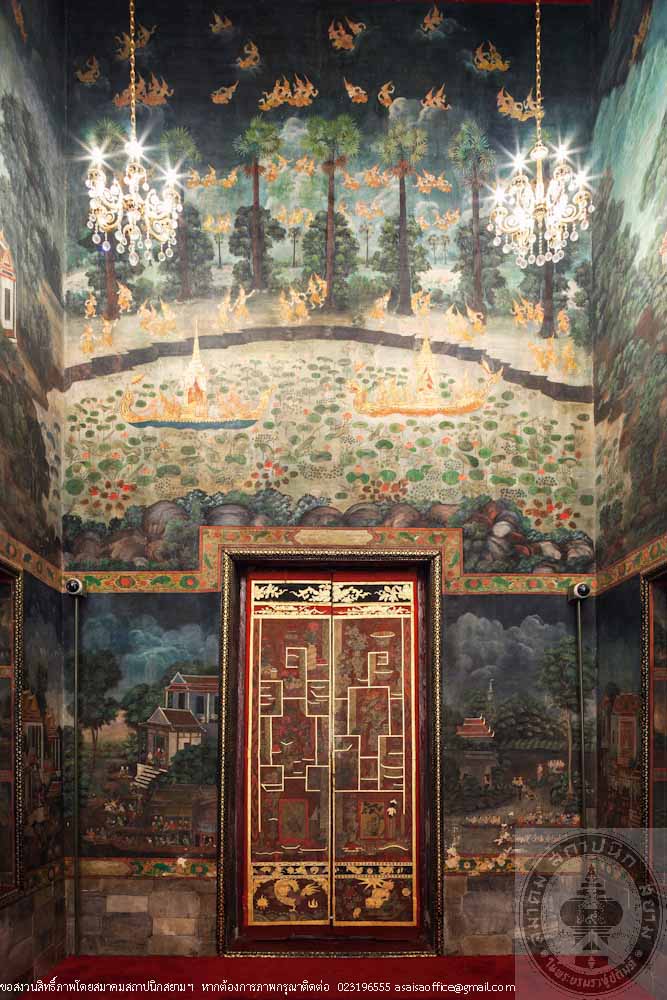
วัดปทุมวนาราม
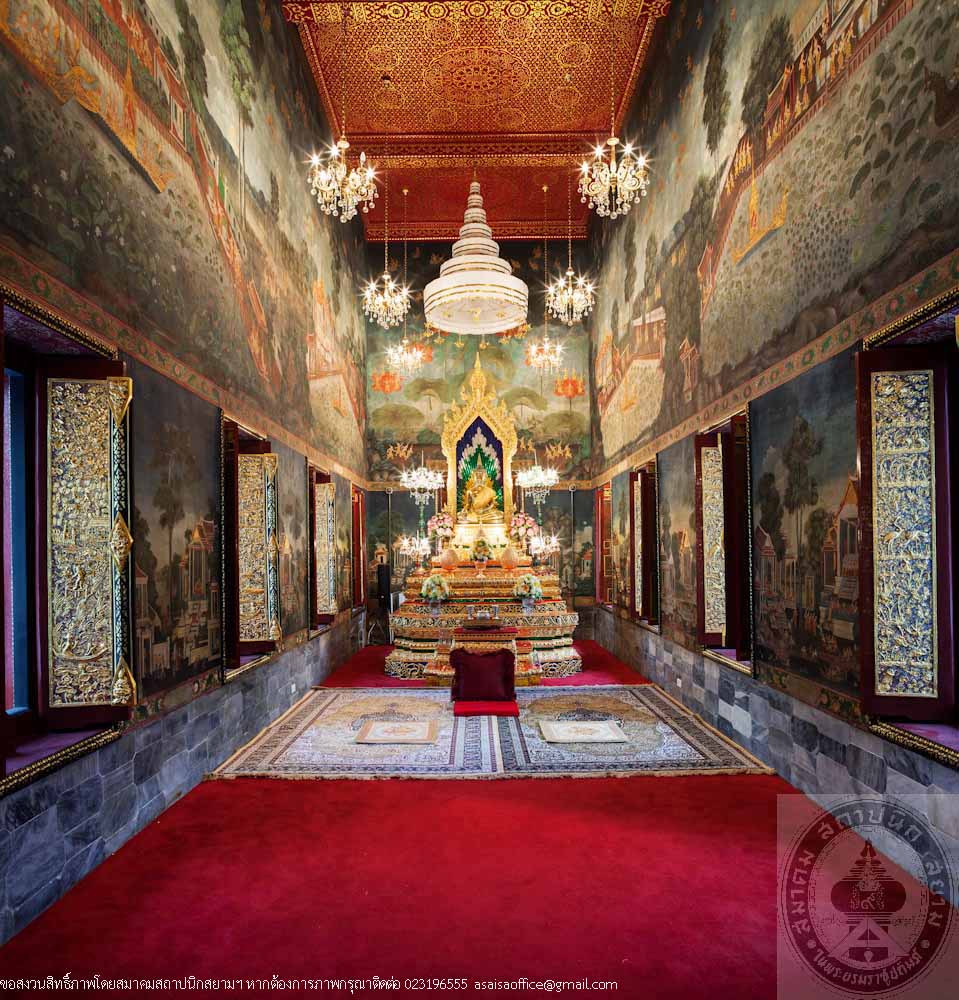
วัดปทุมวนาราม
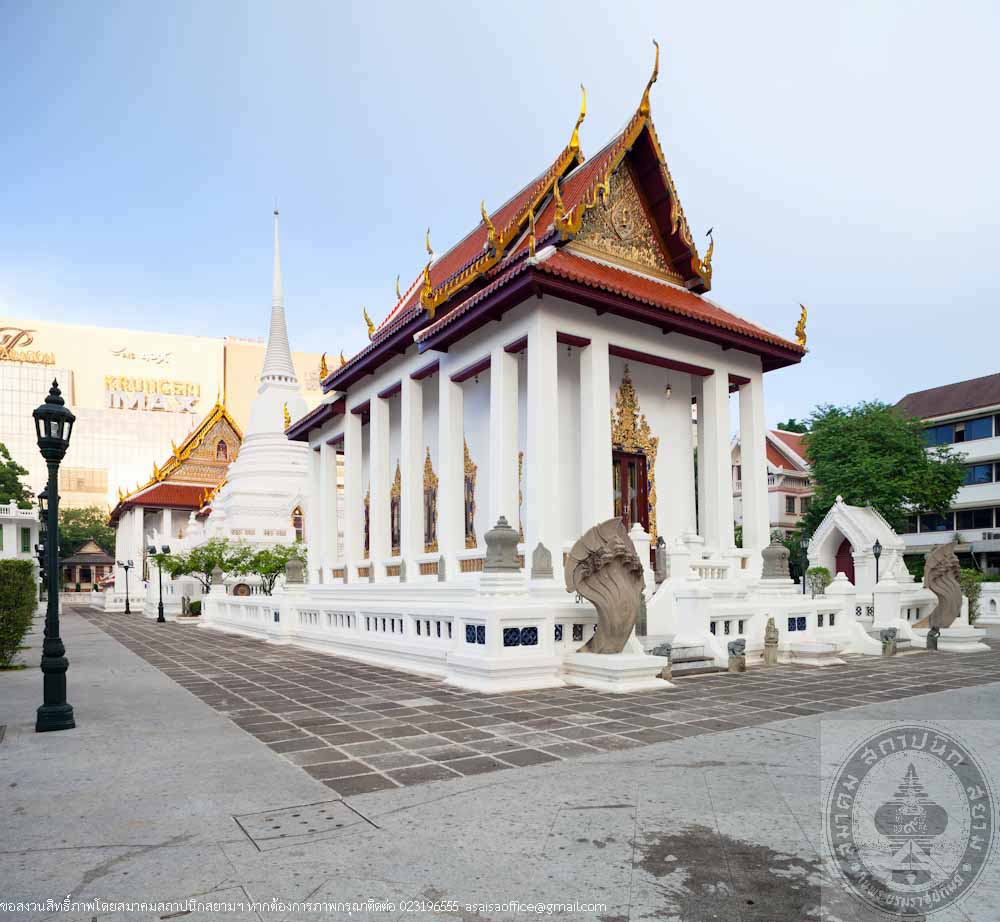
วัดปทุมวนาราม
-

วัดปทุมวนาราม
-

วัดปทุมวนาราม
-

วัดปทุมวนาราม
-

วัดปทุมวนาราม
-

วัดปทุมวนาราม
-

วัดปทุมวนาราม
-

วัดปทุมวนาราม
Wat Pathum Wanaram
Location 969 Rama 1 Road, Pathumwan, Bangkok 10330
Owner Wat Pathum Wanaram Rajaworawihan Restoration
Architect/ Designer Chulalongkorn University (The two pavilion in front of the Ubosot, Chalerm Pra Kiet Pavillion), Burana Thai Company (Phra Ubosot, Phra Vahara) the Fine Arts Department (The Main Chedi, the improvement of the landscape architecture)
Year built 1857, Grand celebration in 1867
Award year 2013
History
At the time H.M. King Monkut decided to establish a leisure resort on the royal farmland along Bang Kapi canal with manmade lotus pond and islets, a palace and residential halls. On the south side of the area, he wanted to build a temple. The King assigned Chao Phraya Borommaha Pichaiyat (That) as the project leader and Phraya Sampoppai (Noo) as a foreman supervising the construction. He named the temple Wat Pathum Wanaram and installed the relics of the Lord Buddha under the main Chedi. At the back of the chapel, he planted Bodhi tree and built a gallery around it. H.M. King Monkut attended construction ceremony and invited the monks from Wat Bawonnivet to stay at this new temple. In 1867, he hosted a grand celebration of the temple.
The temple is surrounded by ditches and ponds with rectangular floor plan and facing east. The Buddhavas section consists of a small ubosot with the two pavilion in front of the wall, the main chedi and then a Vihara larger than the ubosot. In the back, there are Bodhi pavilion, gallery, drum tower, bell tower along the side of the wall with six entry porches. The Buddhavas at the inner part of the area was formerly a wood building and was restored in the reign of King Rama V. The Ubosit and the Vahara are of a hall structure built of brick masonry. The Vihara has shared pillars, wooded roof frame with Chinese porcelain tiles decorated with Raka Chofa and Hang Hong traditionally embellished with gold and glass. The wood carving pediment decorated with a painting of a crown with front shield on double layered pedestal tray enclosed with funnel patterned frame surrounded with lotus. Front porch pediment decorated with stucco resembles the Great Crown of Victory on a double layered pedestal tray and braced with multi-tiered umbrellas on each side. Door and window arches decorated with stuccos, gilded with gold and stained glass. Every single structure in this temple is decorated with stucco designed with a lotus as its main element which gave the temple a very special work of arts.
Many of the monk’s residences received a constant care and restoration yet not entirely. On the auspicious occasion of H.M. King Bhumibol Adulyadej’s 80th Birthday and the 150th Anniversary of Wat Pathum Wanaram in 2007 as well as the year 2011 is the year H.M. the King turns 84 (7th Cycle), Wat Pathum Wanaram has initiated a temple development project to celebrate the King’s various important occasions with support from the government sectors such as Chulalongkorn University, the Fine Arts Department, Bureau of the Crown Property, and private sectors such as Central Group, MK Suki as well as Buddhist laymen from every walk of life. When the restoration of the buildings within the Buddhavas section and landscape architecture was completed, Princess Maha Chakri Sirindhorn graciously presided over the ceremony of lifting the multi-tiered umbrella and the principal Buddha Image and also the lifting of Chofa of the finished Ubosot and Vihara on October 13, 2011.